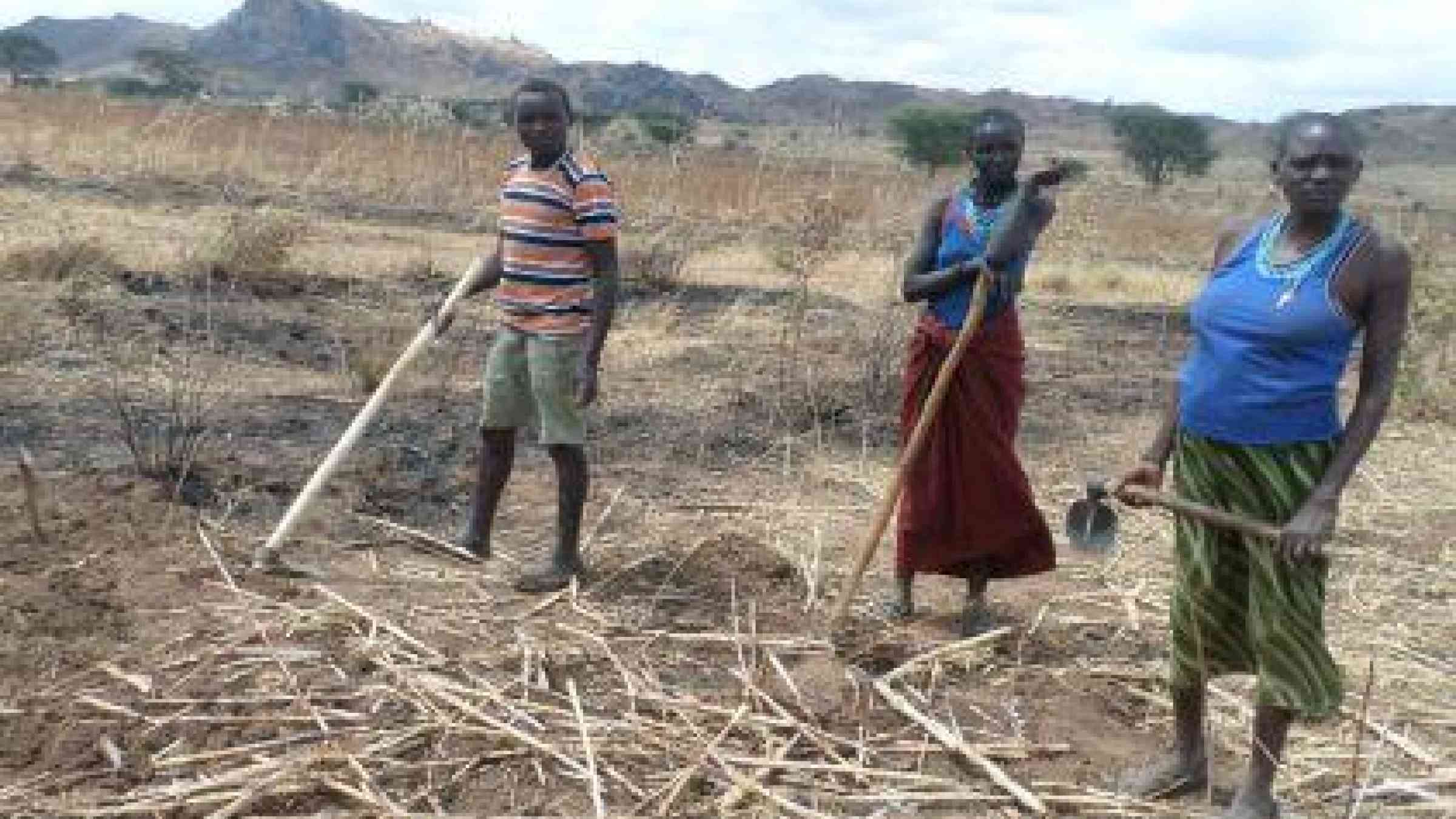Tackling poverty and drought in Uganda

KAMPALA, 22 July 2015 – A five-year initiative to tackle endemic poverty in Uganda’s northern region of Karamoja is expected to boost resilience to natural hazards, especially the recurrent droughts which can decimate livelihoods.
The Drylands Integrated Development Project was launched in June to address a swath of challenges which fuel the population’s vulnerablity to hazards.
“This project will complement and strengthen the existing government projects in Karamoja to address food insecurity, improve crop and livestock production, health coverage, education, develop business and infrastructure,” said Ms. Barbara Nekesa, the State Minister for Karamoja Affairs.
“In this programme, we are going to strengthen the capacity of the local population by developing weather-resistant and fast-maturing crops to improve on food security, improve on livestock, train people on health and hygiene, engage locals in income generating activities through creation of markets. We are modernizing the region,” added Ms. Nekesa.
Addressing the linkages between natural and man-made hazards and underlying risk-drivers -- poverty, disease, climate change, unplanned urbanization, population growth, poor land management, ecosystem damage and weak governance and policies -- is the core of the Sendai Framework for Disaster Risk Reduction, a 15-year global roadmap adopted in March.
Karamoja’s development was held back for decades due to a long-running civil conflict in Uganda’s northern region. While fighting has ended, poverty remains endemic in the area, which is characterized by harsh weather conditions. An estimated 74.2 percent of the population live below the poverty line, compared to the Ugandan national average of 19.7 percent.
Water and sanitation coverage is also patchy in Karamoja, with just 20.6 percent of households having access to latrines, compared to the national average of 72 percent. Only 21 percent of women have access to healthcare during childbirth, about half the national average.
According to a USAID Famine Early Warning Systems Network report for April to June this year, at least 54 percent of an estimated 824,104 people in the Karamoja districts of Kaabong, Kotido, Moroto, Nakapirpirit and Napak are categorized as poor.
The report noted that households in Karamoja had started the 2015 lean season with higher malnutrition prevalence, lower food and assets than previous years, due to three consecutive below-average seasons since 2012.
The Karamoja region is semi-arid and about 80 percent of the population of 1.2 million is involved in pastoralism or agro-pastoralism. The major livelihood challenges include inaccessibility to grazing areas and water resources, livestock diseases and lack of access to markets and information.
Experts say the Drylands Integrated Development Project, which focuses on sedentary farming as the means to tackle Karamoja’s livelihood challenges, should expand its focus to pastoralism.
“Such projects would ensure that improved standards of living for Karimojong [the people of Karamoja] semi-nomadic agro-pastoralists are attained through the self-reliant participatory efforts of the Karimojong themselves,” said Ms. Norah Owaraga, managing director of the development organization CPAR Uganda Ltd.
A Karamoja Development Forum policy brief entitled “REFOCUS! Karamoja Food Problem, the Cattle Crisis and the need for change of strategy” added that, “If programme initiatives and interventions in the Karamoja region are to improve food security, livestock-based livelihoods will have to remain, for now, the best economic mainstay of households in the region.”
The policy brief noted that, “What politicians, leaders and policy makers have largely failed to realize is that the pastoral lifestyle provides for adaptive measures to manage climatic changes.”